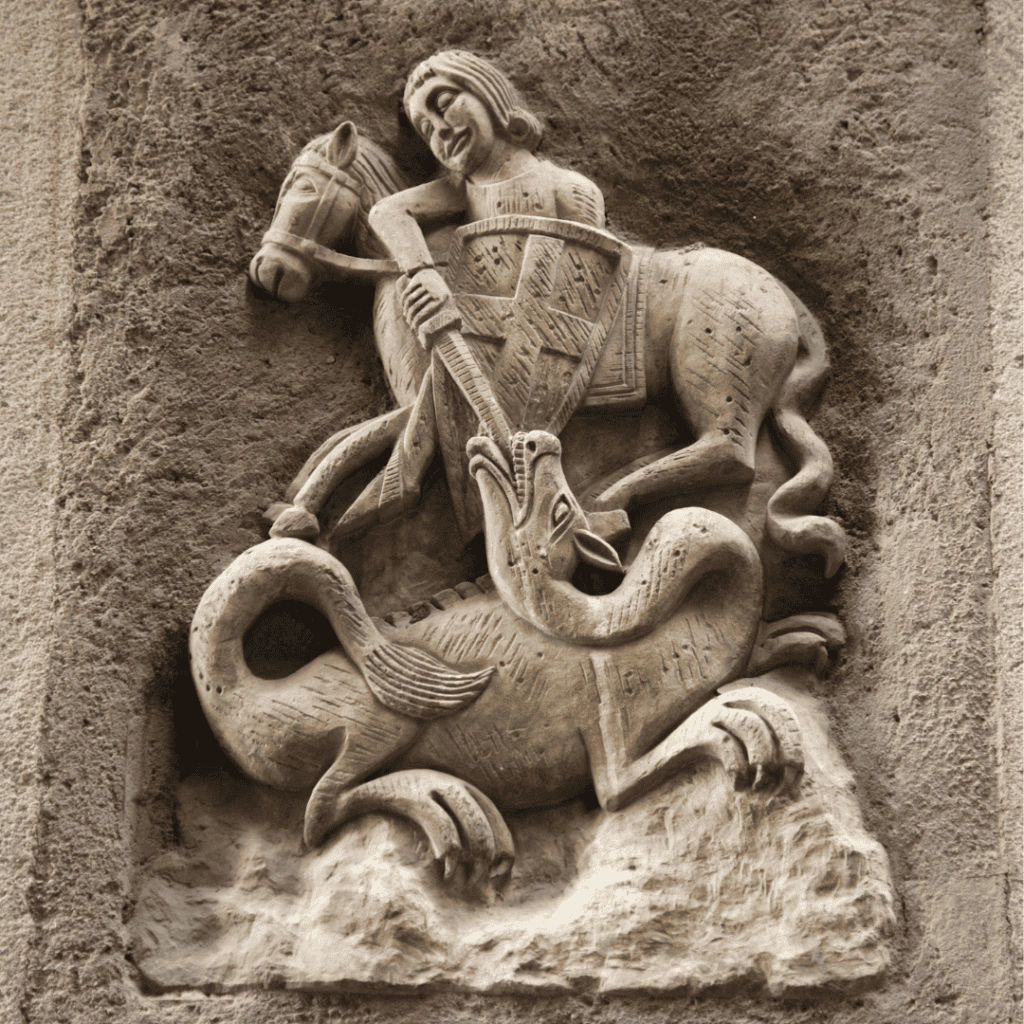International Book Day and Sant Jordi

-
Save
In this post you'll find:
- Information about International Book Day,
- Key points to understand Sant Jordi's Day in Catalonia,
- some news pieces to illustrate these Hispanic traditions and events.
Intro
On April 23rd, International Book Day is celebrated in many countries, but… do you know why? Have you ever heard of Sant Jordi’s Day? Do you know why roses are given as gifts on that day? Well, if you want to answer these questions and learn a little more about the Hispanic culture while practising your Spanish, keep reading this post.
El Día Internacional del Libro - International Book Day
The 23rd of April was chosen as the day to celebrate literature and books, because it supposedly was the day of the death in 1616 of three great writers: Miguel de Cervantes, William Shakespeare and Gómez Suárez Figueroa, better known as the Inca Garcilaso de la Vega. What a coincidence, isn’t it? Well… not exactly. Miguel de Cervantes died on April 22nd, but his death was not recorded until the following day, the day of his funeral. Shakespeare, on the other hand, died on May the 3rd, not in April, so why do we think he died on that day, April the 23rd? This is because at that time they still used the Julian calendar in England, which had begun to be replaced by the Gregorian calendar (the one we mostly use today) at the end of the 16th century in many parts of Europe, such as Spain. Although the date is not exactly correct, it is close to the death of these major figures in the history of world literature, and it is an occasion to remember their works.
As well as paying tribute to great writers, it is also a time to encourage reading and for publishers to sell and promote their books. Thanks to this, there are presentations, book signings, readings of classic works, literary fairs, colloquiums…
Ferias del Libro – Book fairs
Book fairs are open-air markets where different books are exhibited and sold, in stalls organised and separated by bookshops and/or publishers. Here, as well as being able to buy the latest literary novelties, you can also get books signed by the authors themselves, who sign the copies they sell at these stalls. The literary fairs last several days and many local, national and even international writers visit them to dedicate their books to their readers.
Here is a report from Spanish public television about the Madrid book fair, one of the most representative in Spain:
We also include a feature on one of the most important book fairs in Latin America: the International Book Fair of Buenos Aires (FILBA).
Last but not least, here you have a short video about the International Book Fair of Guadalajara (Mexico), the biggest and the most important of the Hispanic literary world:
Sant Jordi
Have you ever visited Barcelona in April? Do you know what the Catalan “Saint Valentine’s Day” is? On the 23rd of April, as well as International Book Day, is the Diada de Sant Jordi or Saint George’s Day (the patron saint of Catalonia). This is the most important festival in this city and therefore the traditions of the two occasions have been combined: books and roses. People give each other books and red roses on this day. The books are obvious, but where do the roses come from and why do they have to be red? To answer this question you need to know the legend of Saint George and the dragon. Here you have a short version of the story in Spanish:
Cuenta la leyenda que un malvado dragón aterrorizaba a
la gente de un pueblo, que tenía que entregar en
sacrificio a una persona cada cierto tiempo para que el
dragón no arrasara con todos. Un día, la hija del rey
fue la elegida para el sacrificio y, con gran tristeza,
el rey y la princesa aceptaron su destino. Cuando la
joven iba hacia la cueva del dragón, un caballero llamado
Jorge apareció para salvarla y mató al dragón con su espada.
De la sangre del dragón nació una rosal con rosas rojas
que el caballero dio como regalo a la princesa. Roses represent the rose bush of the legend and are red, just like the blood of the dragon in the story, although it is also possible to find them in other colours, but red ones are the most common ones. That is why on April 23rd, Saint George’s Day (Sant Jordi), red roses are given as a symbol of love or friendship. It is known as the Catalan Valentine’s Day because, like on February the 14th in many places, lovers take the opportunity to give each other flowers and other gifts, which, in this case, are books. Traditionally, roses were for women and books for men, but nowadays this has changed and it’s common to combine both gifts, although flowers are still given more to women and books are the most unisex gifts.

-
Save
Legend tells of dragons, princesses, magic roses, heroic knights… But who was really San Jorge? San Jorge was a knight of the Roman Empire who died on the 23rd of April and who did not want to persecute and murder the Christians. For this reason he was severely punished and finally beheaded by Emperor Diocletian (284-305). He is a figure that began to be worshipped and the victories of some battles were assigned to him (after his death) and legends were created with his name. He is the patron saint of many places, and in Spain Aragon and Catalonia stand out for the importance of their celebrations and traditions for St. George’s Day.
If you want to see some images of this celebration, here you have a special piece by the Spanish public television (RTVE) of the year 2023:
Why is Sant Jordi so important in Catalonia?
In addition to what we have explained so far, you should know that in the 19th century started the so-called Renaixença (renaissance) in the territories of Catalonia and Valencia, where they wanted to recover the general use of their languages (Catalan and Valencian), defend them and transform them into literary languages. It was at this time that the celebration of Sant Jordi’s Day began to gain importance as a cultural and identity-related event in Catalonia. Therefore, Sant Jordi’s Day is much more than International Book Day for the Catalans, it is a day to celebrate their own culture and language and the richness of their traditions.

-
Save
Would You like to Take Your Spanish to the Next Level?
Whether you’re a complete beginner or you’re an advanced student, with us you’ll reach the next level of Spanish quickly and easily. With 24 Levels to Spanish fluency, the next level is always close by, so you will never lose motivation.
You can choose between:
In both cases, you’ll learn Spanish using our successful 24 Level System to Spanish Fluency® and our unique Spanish teaching methods.

-
Save











